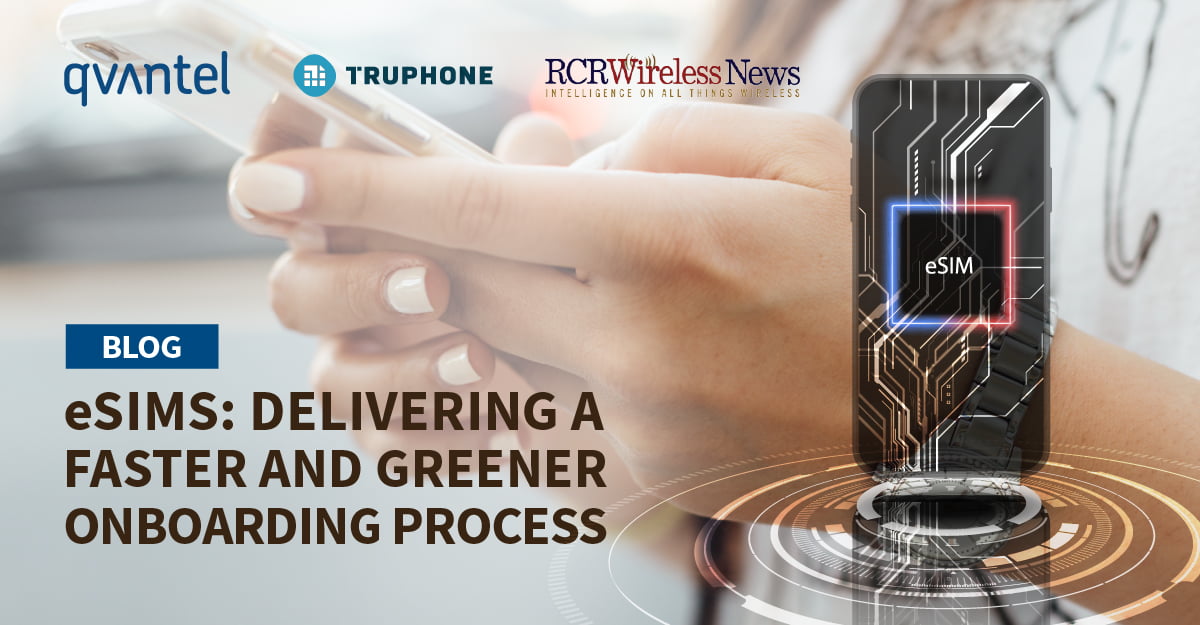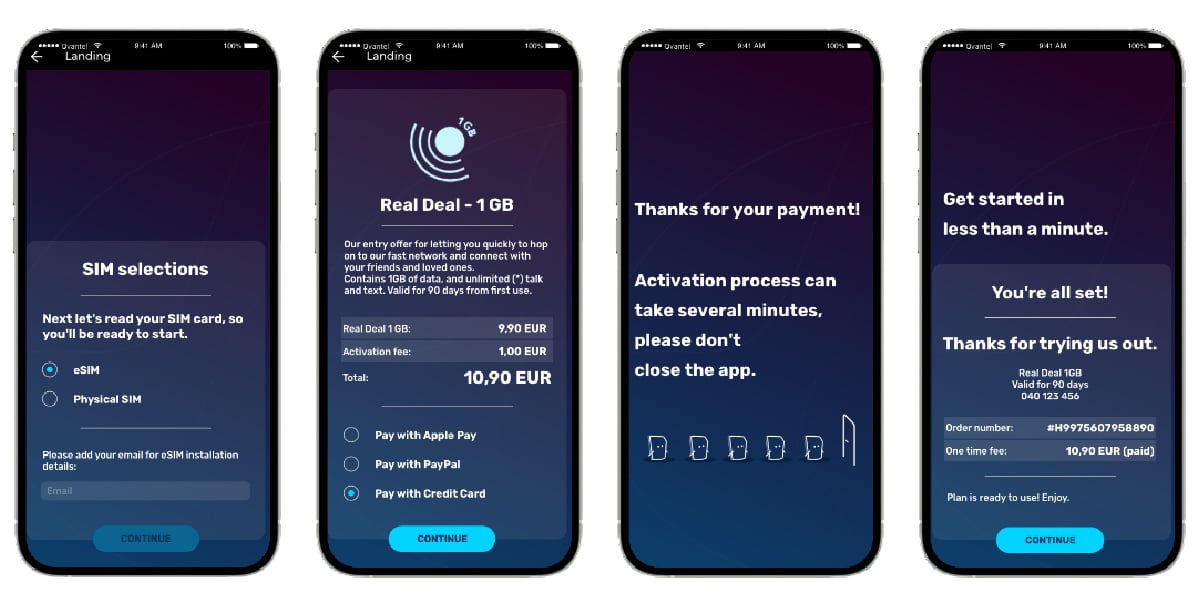eSIMs – Delivering a Faster and Greener Onboarding Process

This article was first published in RCR Wireless.
When buying a new digital service, be it Netflix or Spotify, customers complete the onboarding process and then start using the service straight away. For the vast majority of mobile customers, there is usually a delay of several days between onboarding and getting to use the new service as the customers have to wait till a SIM card is posted to them. This isn’t really delivering the ‘buy now/use now’ digital experience that customers are used to with digital services.
The popularity of SIM-only deals and the increasing number of mobile phones and other eSIM-connected devices that are now available suggests that CSPs can deliver a much better and faster onboarding experience for new customers. By using eSIMs new customers can be live in a matter of minutes as opposed to days.
For most CSPs, the onboarding process for new customers is pretty slick. A couple of forms for personal details, payment details, and in some cases photo recognition for security purposes, can all be done in minutes. If customers are fortunate enough to have an option to select eSIM at this stage of the onboarding process then they can be live in minutes.
As eSIM offers activation in minutes, it’s ideal for customers to try out a new service and for CSPs to promote entry offers. The main point is that by using automatic eSIM activation as a part of a digital know-your-customer process, new customer onboarding can be done in minutes.
STEP 1
Select eSIM for SIM selection.
STEP 2
Provide payment details for this new offer.
STEP 3
Confirmation of payment.
STEP 4
Confirmation of service activation. The customer is ready to start using this service.

And that's it. It’s a lot more efficient than the alternative, which can involve the physical SIM card to be delivered by registered post, meaning the customer has to wait at home to sign for the SIM card when it arrives.
If the customer isn’t at home when it arrives the postal service will leave a note to organise another delivery. Some CSPs have a solution for SIMs that don’t get delivered – if the SIM hasn’t been delivered in 10 working days the customer should get in touch and a new SIM will be organised. But that’s two weeks. There are alternatives such as collection kiosks, but these are still much less efficient than eSIMs.
Adding a few days to an otherwise efficient digital-first onboarding process seems a bit of a waste. As more CSPs offer eSIMs and as we move increasingly to SIM-only, no-contract subscription type deals, there is more pressure on CSPs to retain customers by providing a good experience and good service. eSIMs can help here and enable CSPs to create a ‘stickier’ relationship with their customers by developing a range of eSIM-enabled offers/products that can be bundled together.
As more devices become connected, eSIMs provide the opportunity for operators to start selling connected devices as part of convergent offerings. These could cover everything from home security hooked up to a 5G network to wearables and smartwatches.
One of the main problems with eSIMs is simply that people don’t know about them. In 2021 the GSMA reported that only 20% of consumers are aware that eSIMs exist. There could therefore be an opportunity for CSPs who offer eSIMs to promote the ‘buy now/use now’ message.
At holiday times, like Christmas, when a lot of kids will get their first mobile, the ability to have the mobile up and running on Christmas day could be an attractive option. If a customer searching for a new mobile service sees that they can be live in minutes as opposed to days then that could perhaps help influence their decision over which CSP to choose.
Then there is the ecological argument. Many CSPs have strategic green initiatives and proudly promote these on their websites. However, in 2020, 4.8 billion traditional plastic SIM cards were sent out by CSPs, which generated over 20,000 tonnes of waste plastic. By removing a physical piece of equipment and the associated warehousing, production, and delivery costs in terms of pollution then, no matter how small a step it may seem, it is ecologically friendly.
The rise of the digital-first operator is seeing an increased move to digital-first services. Moving to eSIMs speeds up the onboarding process for new customers by several days, plus it enables more eSIM-enabled devices to be connected and sold to a CSP’s customer base. This, plus the ecological argument, would tend to suggest that the days of the traditional plastic SIM card are numbered and that eSIMs are the convenient and sustainable choice.
Martin Morgan
Head of Digital Marketing, Qvantel
Olivier Sans
Sales Manager, Truphone
